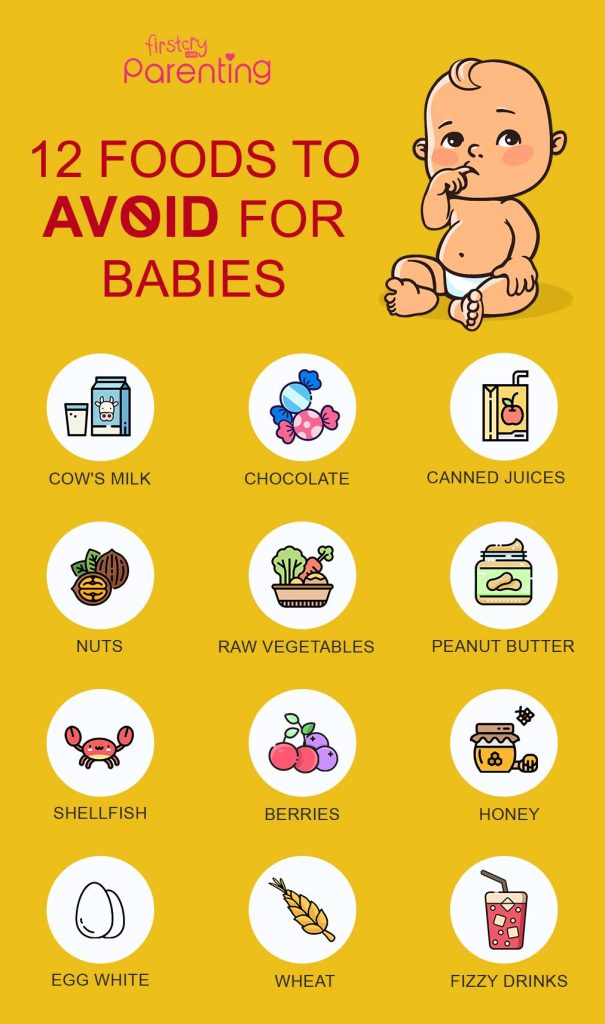If your baby refuses the bottle, try different bottle nipples and feeding positions. Ensure your baby is not hungry or sleepy.
Feeding a baby can be challenging, especially when they refuse the bottle. This situation can be stressful for parents, but understanding possible reasons and solutions can help. Babies may refuse bottles due to various factors, such as nipple preference, feeding positions, or hunger levels.
Experimenting with different bottle nipples and feeding positions can make a significant difference. It’s also essential to ensure that your baby is not overly hungry or sleepy before feeding. These simple adjustments can often resolve the issue and make feeding time more comfortable for both you and your baby. Patience and persistence are key in finding what works best for your little one.
Common Reasons For Bottle Refusal
Babies refusing bottles can worry parents. Understanding why helps solve the issue. Below are common reasons for bottle refusal.
Feeding Position
Feeding position matters a lot. Babies might find some positions uncomfortable. Try different angles to see which one works.
- Hold baby upright.
- Support their head and neck.
- Try a semi-reclined position.
Sometimes, baby prefers being closer to you. Hold them in a cradle position.
Bottle Type
Bottle type can affect feeding. Some babies dislike certain materials. They might prefer silicone nipples over latex ones.
| Type | Pros | Cons |
|---|---|---|
| Plastic | Lightweight | Contains chemicals |
| Glass | Safe and chemical-free | Heavy and breakable |
| Silicone | Flexible and safe | Expensive |
Experiment with different types and see which your baby prefers.
Tip 1: Experiment With Different Bottles
Finding the right bottle can be a game-changer if your baby refuses the bottle. Experimenting with different bottles may help find the one your baby likes. Factors like nipple shape and flow rate play significant roles. Let’s dive into these aspects.
Nipple Shape
Babies have preferences for nipple shapes. Some prefer wide, breast-like shapes. Others might prefer narrow, traditional shapes. Trying different shapes helps identify what your baby prefers. Look for nipples that mimic the feel of breastfeeding. This can make the transition easier.
Flow Rate
Flow rate is the speed at which milk flows from the bottle. Some babies prefer a slow flow, mimicking breastfeeding. Others might prefer a faster flow. Start with a slow-flow nipple and observe your baby’s reaction. If they seem frustrated, switch to a medium or fast flow.
| Nipple Shape | Flow Rate |
|---|---|
| Wide, breast-like shapes | Slow flow for newborns |
| Narrow, traditional shapes | Medium flow for older babies |
| Specialty shapes | Fast flow for faster feeding |
Experimenting with different bottles involves trying various combinations of nipple shapes and flow rates. This can help find the perfect bottle for your baby. Always observe your baby’s cues and reactions. This will guide you in making the best choice.
Tip 2: Adjust Feeding Times
Sometimes, babies refuse bottles because they are not hungry. Adjusting feeding times can help. Watch for signs that show your baby is ready to eat. This can make a big difference.
Hunger Cues
Babies give signs when they are hungry. These signs are called hunger cues. Recognizing these cues can help you know when to feed your baby.
- Smacking lips
- Putting hands to mouth
- Rooting (turning head towards breast or bottle)
- Fussing or crying
Feed your baby when you see these signs. This can make feeding times smoother.
Routine Changes
Changes in your baby’s routine can also affect feeding times. A new sleep schedule or activities can change hunger patterns.
| Old Routine | New Routine |
|---|---|
| Feed every 3 hours | Feed every 2.5 hours |
| Nap at 10 AM | Nap at 9 AM |
Adjust the feeding times to fit the new routine. This can help your baby accept the bottle better.

Credit: www.facebook.com
Tip 3: Modify Milk Temperature
Is your baby refusing the bottle? One simple change could help. Tip 3: Modify Milk Temperature. Babies can be very sensitive to the temperature of their milk. Adjusting the milk’s temperature can make a big difference. Here’s how you can try it.
Warming Techniques
Some babies prefer their milk warm, similar to breast milk. Below are some effective warming techniques:
- Warm Water Bath: Place the bottle in a bowl of warm water for a few minutes. This method ensures even heating.
- Electric Bottle Warmer: Use an electric bottle warmer for quick and consistent results. Follow the manufacturer’s instructions.
- Running Warm Water: Hold the bottle under running warm water, rotating it to heat evenly.
Always test the milk’s temperature by dropping some on your wrist. It should feel lukewarm, not hot.
Cold Milk
Some babies might prefer cold milk. This is especially true for babies who are teething. To serve cold milk:
- Refrigerate the Bottle: Store the bottle in the refrigerator until feeding time. This keeps the milk cool and fresh.
- Frozen Milk Cubes: Prepare milk in ice cube trays. Thaw a few cubes in the bottle before feeding. This cools the milk quickly.
Before offering the bottle, shake it to ensure it is mixed well. Cold milk can be soothing, especially during hot weather.
By experimenting with different milk temperatures, you can find what your baby prefers. This simple adjustment can make bottle feeding a more pleasant experience for both of you.
Tip 4: Create A Calm Environment
Babies can be sensitive to their surroundings, especially during feeding times. Creating a calm environment can help your baby feel more comfortable and willing to take the bottle. Here are some tips to help you achieve a serene setting.
Minimize Distractions
Make sure the room is quiet and free from loud noises. Turn off the TV and close the door to block any external sounds. Use soft lighting to create a relaxing atmosphere. This will help your baby focus on feeding without getting distracted.
Soothing Sounds
Play gentle music or white noise to create a soothing ambiance. You can use a white noise machine or play lullabies on your phone. The consistent sound can calm your baby and make feeding time more enjoyable.
Here are some types of sounds that can help:
- Soft lullabies
- Nature sounds like rain or waves
- White noise
Experiment with different sounds to see what your baby prefers. A calm environment can make a big difference in your baby’s feeding experience.

Credit: milk-drunk.com
Tip 5: Involve A Different Caregiver
If your baby refuses the bottle, consider involving a different caregiver. Sometimes, babies associate feeding with their mothers, especially if they are breastfeeding. Having someone else offer the bottle can make a big difference.
Parent-child Bond
Babies often have a strong bond with their parents. This bond can sometimes lead to bottle refusal. The baby might prefer breastfeeding over bottle-feeding. Introducing a different caregiver can help break this pattern.
| Benefits of Different Caregiver | Details |
|---|---|
| New Experience | Baby sees feeding as a new experience. |
| Less Stress | Parents can feel less stressed. |
| Bonding | Baby bonds with another family member. |
Trust Building
Building trust with a new caregiver is essential. The baby needs to feel safe and comfortable. This trust can help the baby accept the bottle more easily.
- Choose someone the baby knows well.
- Ensure the caregiver is calm and patient.
- Have the caregiver spend quality time with the baby.
Trust-building activities can include playing, cuddling, and talking. These activities help the baby feel secure. A secure baby is more likely to accept a bottle from a new person.
Tip 6: Combine Breastfeeding And Bottle Feeding
Combining breastfeeding and bottle feeding can be a great solution. It helps when a baby refuses the bottle. This method offers flexibility and comfort. Here are some strategies to make this transition smoother.
Paced Feeding
Paced feeding mimics breastfeeding. It controls the milk flow. Hold the bottle horizontally. Allow the baby to suck and swallow naturally. Take breaks. This prevents overfeeding. It also reduces the risk of gas and colic.
Follow these steps for paced feeding:
- Hold the baby upright.
- Tip the bottle horizontally.
- Let the baby suck actively.
- Pause every few minutes.
Alternate Methods
Sometimes, babies resist the bottle. Try different methods to offer milk. These methods can help:
- Use a spoon or cup for feeding.
- Try a syringe or dropper.
- Use a different bottle nipple.
- Offer milk when the baby is calm.
Check the table for alternate feeding methods and their benefits:
| Method | Benefits |
|---|---|
| Spoon Feeding | Easy to control milk flow |
| Cup Feeding | Suitable for older babies |
| Syringe | Useful for small amounts |
| Dropper | Less intimidating for babies |
Experiment with these methods. Find what works best for your baby. The goal is to ensure your baby gets enough milk. Stay patient and persistent. Your baby will adjust with time.

Credit: childrensnutrition.co.uk
Tip 7: Seek Professional Help
When your baby refuses the bottle, it can be stressful. Sometimes, you need more help than what friends or family can offer. Tip 7: Seek Professional Help is here for you. Professionals can provide solutions that you might not think of. Let’s explore two key types of professional help: Lactation Consultants and Pediatrician Advice.
Lactation Consultants
Lactation consultants specialize in helping with feeding issues. They can offer personalized advice. They may suggest different bottle types or feeding techniques. They often provide in-person support or virtual consultations. This can be very convenient for busy parents. Here are some things lactation consultants might do:
- Observe your baby’s feeding behavior
- Suggest different bottle nipples
- Teach you new feeding positions
- Provide tips to make feeding time more comfortable
Many parents find lactation consultants very helpful. They bring peace of mind and practical solutions.
Pediatrician Advice
Your baby’s doctor is another great resource. Pediatricians understand your baby’s health needs. They can identify if there’s a medical reason for bottle refusal. Here are some ways pediatricians can help:
- Check for underlying health issues
- Recommend formula changes if needed
- Provide guidance on feeding schedules
- Refer you to other specialists if necessary
Consulting with your baby’s pediatrician ensures you’re covering all bases. They can offer both immediate solutions and long-term strategies.
Frequently Asked Questions
What Should You Do If A Baby Rejects A Bottle?
Try different bottle nipples to find a comfortable one. Ensure the milk is at the right temperature. Hold the baby in a different position. Offer the bottle when the baby is calm. Consult a pediatrician if the problem persists.
Will A Baby Starve Refusing A Bottle?
A baby won’t starve if they refuse a bottle. Seek advice from a pediatrician for alternative feeding methods.
Why Is My Baby Rejecting The Bottle All Of A Sudden?
Your baby might reject the bottle due to teething, illness, or a preference for breastfeeding. Try different nipples or feeding positions.
How Do I Get My Breastfed Baby To Take A Bottle?
Introduce the bottle gradually. Use breast milk in the bottle. Offer the bottle when the baby is calm. Let someone else feed. Be patient and consistent.
Conclusion
Helping a baby accept the bottle can be challenging, but persistence pays off. Try different bottles and nipples. Stay calm and patient during feeding times. Consult your pediatrician if the refusal continues. Remember, each baby is unique. With love and patience, your baby will adapt to bottle feeding eventually.


